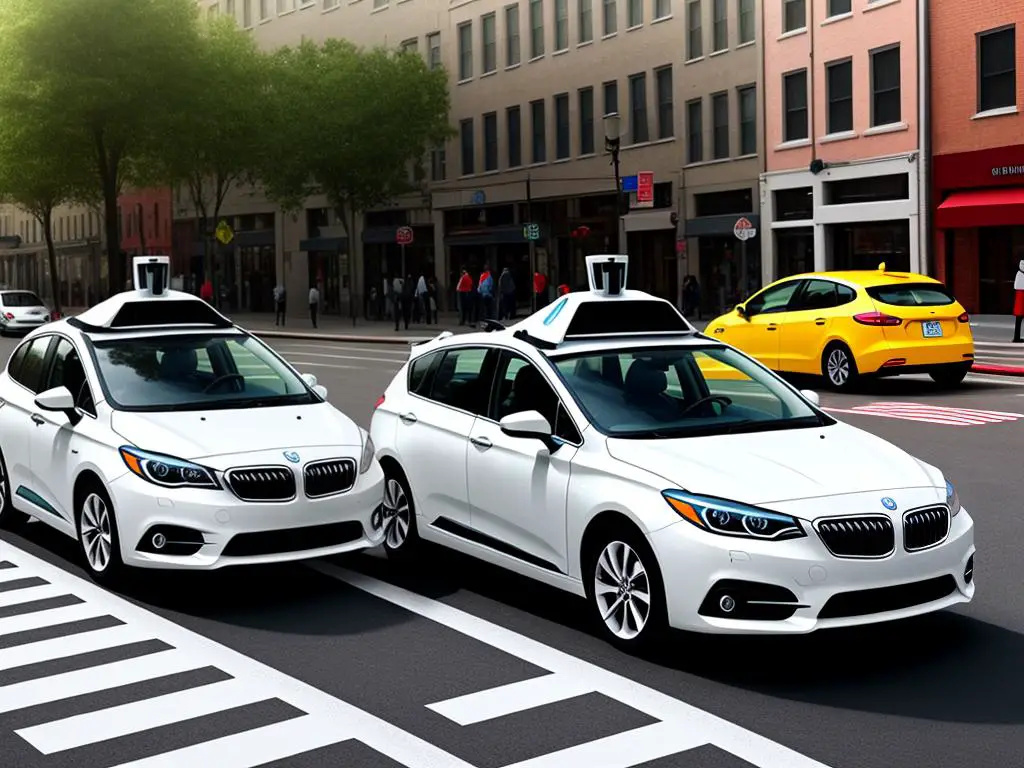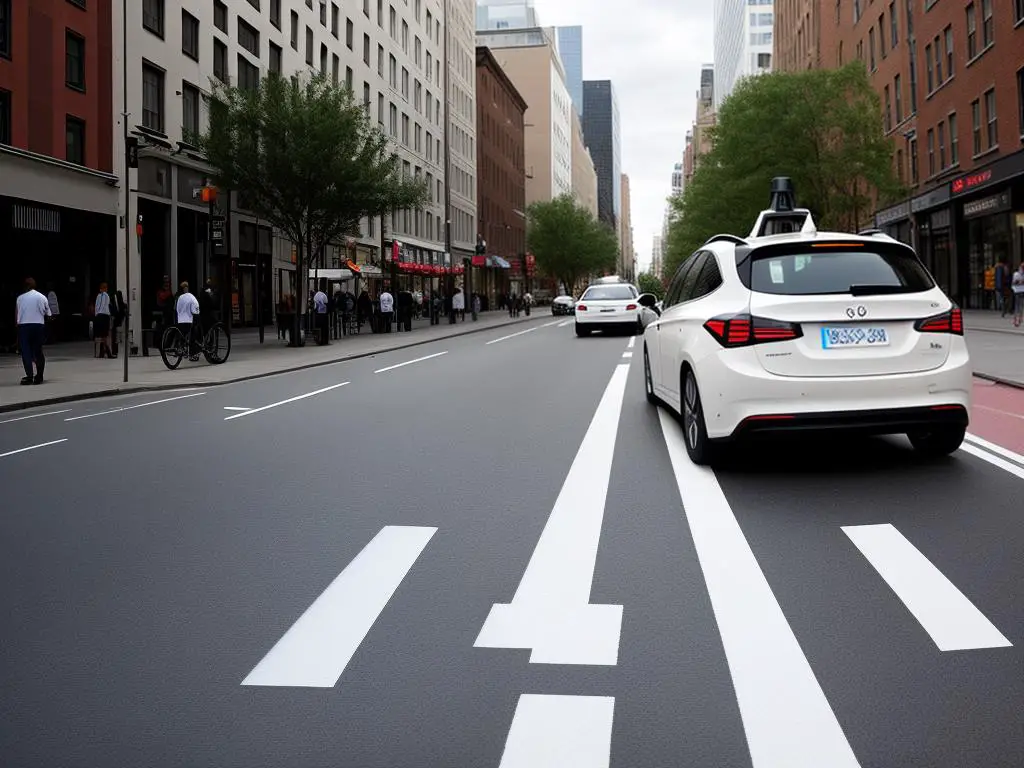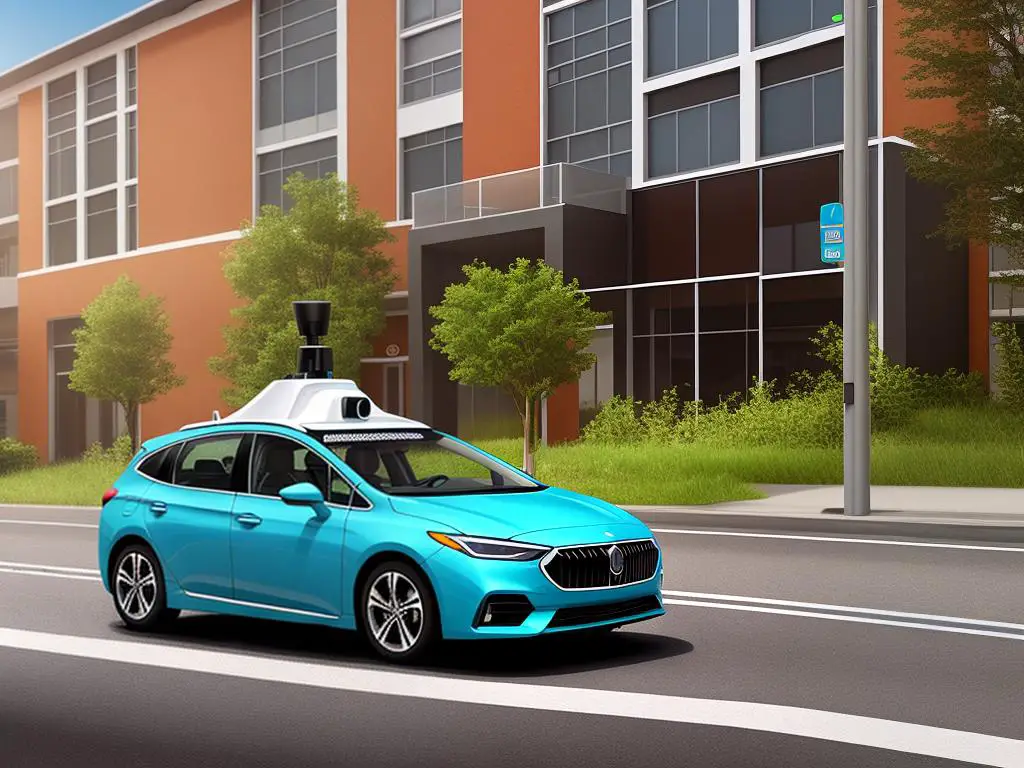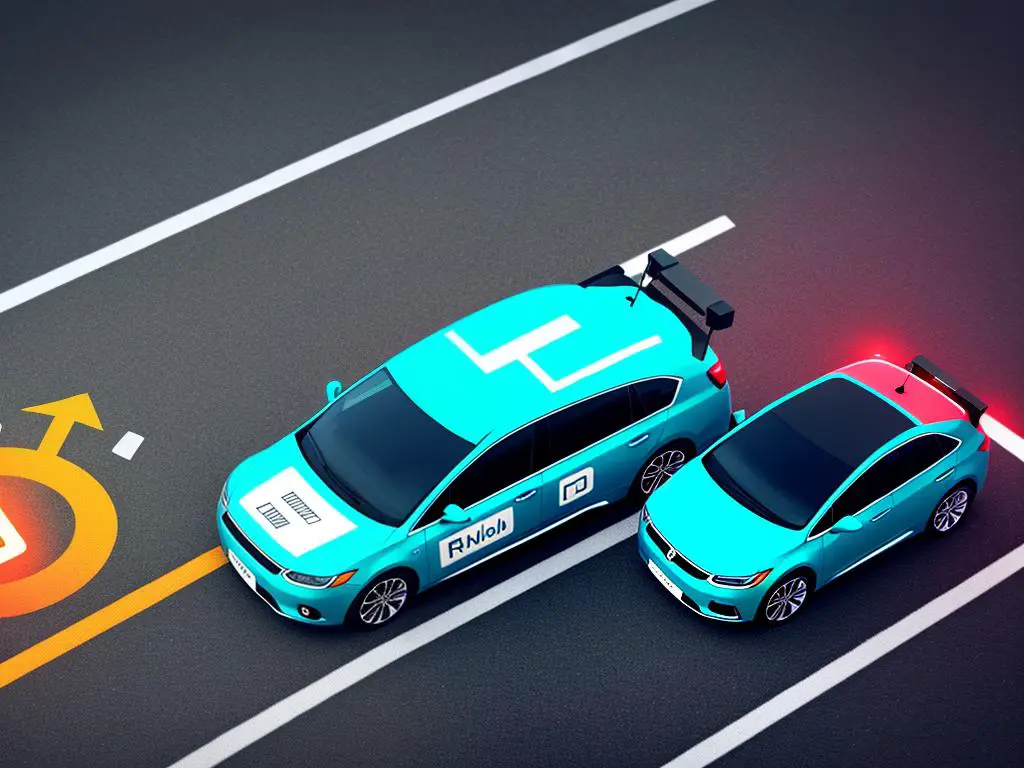Embracing the Future: Guide to Self-Driving Cars and Artificial Intelligence
In an age dominated by rapid technological advancement, few developments hold quite as much transformative potential as self-driving cars. Harnessing the power of artificial intelligence, these autonomous vehicles could fundamentally alter our roads, cities, societies, and economies. From understanding the intricate technology that facilitates driverless navigation to grappling with the ethical and legal challenges it presents, it is critical to be well-informed about these vehicles as they come into widespread use. In this comprehensive analysis, we will delve into the basics of self-driving cars, the role of AI in their operation, their pros and cons, the regulatory and ethical considerations they present, and the potential effects they may have on our economy and society.
Basics of Self-Driving Cars
Basics: Understanding Self-Driving Cars
As a ground-breaking technological concept, self-driving cars, also known as autonomous vehicles, represent the pinnacle of automotive innovation as we know it. These cars are designed and engineered to navigate roads and accomplish mobility tasks without requiring human intervention. They are embedded with a suite of sensors and artificial intelligence (AI) technology that allows them to perceive their surroundings, infer appropriate responses to situations, and carry out functions akin to those performed by a human driver.
Artificial Intelligence and Self-Driving Cars
At the core of self-driving cars is AI. This core AI technology renders cars “intelligent,” enabling them to learn from encounter experiences, adapt to different driving environments, and make decisions in real time. AI allows these vehicles to perceive surroundings, recognize objects and obstructions, handle complex situations in traffic, and avoid accidents while ensuring a smoother ride.
One critical aspect of AI in self-driving cars is machine learning, a subset of AI that allows systems to learn and improve from experience. Machine learning, in conjunction with deep learning, another subset of AI, equips these cars with the capacity to process vast amounts of data collected by sensors and cameras. Subsequently, they use this data to identify patterns, understand road signs, detect obstacles, and safely navigate roads and highways independently.
Functioning: How Self-Driving Cars Work
Self-driving cars function using an array of sophisticated components that work cohesively, including GPS systems, sensors, and AI technology. Firstly, the GPS systems allow the self-driving cars to identify their locations and destinations accurately.
Secondly, the various on-board sensors, such as Lidar units, radar sensors, and ultrasonic sensors, play a crucial role. Lidar units use pulses of light to map the car’s surrounding environment in 3D, while radar sensors determine the range, angle, and velocity of surrounding objects. Ultrasonic sensors, on the other hand, are primarily used for detecting close-by objects and obstacles when the car is parking or at slow speeds.
Lastly, the AI system takes the data input from these sensors to understand the car’s surroundings, interpret the data, make predictions, and finally, decide the best course of action. This decision-making process encompasses speed regulation, steering control, and timely responses to situations like pedestrian movement and changing traffic signals.
Unveiling Self-Driving Technology: A Potential Breakthrough in Road Safety
In the progressive sphere of transportation, self-driving cars stand out as an exceptional invention, boasting a major potential to minimize traffic accidents, a significant portion of which arise due to human errors. Besides boosting road safety, these autonomous vehicles are also expected to act as a boon for those incapable of driving such as the elderly or individuals with disabilities.
It’s crucial, however, to recognize that the development of autonomous vehicles is a burgeoning field, fraught with numerous hurdles like technical glitches, security risks, and a myriad of legal and ethical implications. Nevertheless, ongoing scientific developments and meticulous testing are steadily shaping the future of self-driving cars as a critical aspect of our transport infrastructure.

Role of AI in Self-Driving Cars
Decoding the Role of Artificial Intelligence in Autonomous Vehicles
Artificial Intelligence (AI) is the hidden force behind the operation of autonomous or self-driving vehicles. Essentially, AI allows these vehicles to interpret their surroundings, make informed decisions based on this interpretation, and operate efficiently. The operational competence of self-driving cars majorly revolves around three AI elements: machine learning, sensor technology, and decision-making platforms.
Machine Learning: Navigating the Learning Curve
Machine Learning (ML) is at the heart of AI, and self-driving cars are no exception. The term “machine learning” refers to the ability of AI systems to learn from data and improve performance without explicit human instruction. It enables the car’s system to adapt to various driving conditions, recognize patterns, and make accurate predictions based on historical and real-time data.
Self-driving cars learn through a process known as Deep Learning. Here, Artificial Neural Networks (ANNs) mimic the human brain’s structure and function. An ANN can process a vast amount of inputs and give an immediate response. It can understand street signs, recognize pedestrians, and distinguish other vehicles on the road.
Sensor Technology: The Eyes and Ears of Self-Driving Cars
There are multiple sensors involved in creating a self-driving car, often compared to the human senses. These sensors provide information to the car’s AI systems about the surrounding environment. These include RADARs, LIDARs, cameras, ultrasonic sensors, and high-grade GPS.
RADAR sensors measure the distance and speed of objects surrounding the car, while LIDAR sensors offer high-resolution 360-degree images using pulsed lasers. Cameras provide visuals and interpret traffic signs and road markings. Ultrasonic sensors detect objects at close ranges, especially helpful during parking. Alongside, advanced GPS systems track the car’s exact location.
The output from these sensors feeds into AI systems, allowing them to understand the car’s current state and surrounding environment.
Decision-Making Platforms: Steering Towards Safety
The decision-making platforms in self-driving cars include perception, prediction, planning, and control software. They continuously process sensor data to understand the environment, predict the behavior of objects around the vehicle, determine the safest path and send instructions to the car’s systems to execute that path.
The perception software recognizes and categorizes objects, like other vehicles, pedestrians, or cyclists. The prediction software then anticipates these objects’ likely actions. The planning software devises an optimum path based on perceived objects and predicted actions.
The control software oversees physical execution, such as steering, accelerating, braking, and signal lights. Its prime directive is safety, ensuring the vehicle’s actions do not endanger any road users, including the vehicle itself.
Anticipated Influx and Impact of Autonomous Vehicles
AI systems perfectly blending with each other in autonomous vehicles promises significant benefits: potential reduction in road accidents mostly caused by human errors, improved fuel efficiency, and a game-changing shift for individuals who can’t drive. It’s crucial, however, to remember that these technologies are still in their growth phase, and many challenges including regulatory acceptance, broad usability, and ethical considerations remain to be overcome.
AI’s instrumental role in powering self-driving cars reflects the remarkable reach of technological advancement and its capability to fundamentally revamp the world of transportation. Despite the challenges faced, the advancement of AI-driven autonomous vehicles continues at a fast pace, indicating a future where it plays a crucial role in transportation.

Advantages and Disadvantages of Self-Driving Cars
How Self-Driving Cars Could Transform Our Roads
Powered by intricate machine learning and AI, autonomous vehicles promise to usher in a new era in transportation. The most compelling advantage is the potential surge in safety. Human errors are the main cause of most road accidents; AI cars aim to reduce this significantly by eliminating the human element. With the integration of sensors, radars, and cameras that continuously track the vehicle’s surroundings, autonomous vehicles can react far quicker than human drivers, thereby reducing accidents.
Moreover, self-driving cars can drastically enhance the efficiency of traffic flow. They are designed to exchange information about traffic conditions, optimize routes, and fuel consumption, thus decreasing travel times and reducing vehicular pollution. This enhanced road efficiency and the resulting decrease in carbon emissions emphasize the promise held by the advent of autonomous vehicles.
Potential Drawbacks and Risks
Despite these apparent advantages, self-driving cars are not without their potential drawbacks. For starters, the technology is still in the developmental stage and prone to technical glitches. These glitches can range from misreading traffic signs to failing to detect other vehicles, posing significant safety risks. Additionally, the technology’s reliance on sensors and GPS systems also raises concerns about its effectiveness in adverse weather conditions.
Moreover, autonomous vehicles could be a prime target for hackers. As they are essentially computers on wheels, cybercriminals could potentially infiltrate their systems and compromise their operations, leading to serious safety hazards. This risk necessitates the implementation of advanced cybersecurity measures to protect these vehicles.
Another disadvantage revolves around the ethical dilemma that AI could face in certain emergency situations. If an accident is imminent, how should the AI prioritize safety — for the car passengers, other drivers, or pedestrians?
Unraveling The Crucial Role of Artificial Intelligence in Self-Driving Cars
Recent developments and breakthroughs in the sphere of Artificial Intelligence (AI) have considerably catalyzed the progression of self-driving cars. An essential component of AI called machine learning empowers autonomous vehicles to learn from their real-world experiences, subsequently refining their decision-making mechanisms. This continuous process of learning and adjustment enhances not only the performance but also the safety of these vehicles.
Nevertheless, the integration of AI into this landscape is not without challenges. The inability of existing AI technology to comprehend complicated human behavior results in difficulties in predicting the actions of pedestrians or other vehicles driven by humans on the road. Furthermore, the sophisticated AI systems embedded in these vehicles necessitate vast amounts of data to operate efficiently, which subsequently stirs concerns about privacy relating to the collection and eventual usage of this data.

Regulatory and Ethical Considerations
Navigating The Regulatory Maze: Present Legalities Governing Self-Driving Cars
While the US Department of Transport has provided some degree of national guidance, regulations relating to self-driving cars are primarily dependent on individual state laws. Currently, 29 states, in addition to Washington D.C., have established a legal framework pertinent to autonomous vehicles.
The National Highway Traffic Safety Administration (NHTSA) has structured a classification system covering five levels of vehicle autonomy. This ranges from Level 0 where human drivers completely control the vehicle, to Level 5 which represents full autonomy in all conditions. The current legal framework permits up to Level 2 partial automation. This level includes combined automated functions such as acceleration and steering, but necessitates drivers to remain engaged with the act of driving and continually monitor the surrounding environment.
Potential Changes to Regulations
The autonomous vehicle industry is constantly evolving with the possibility of potential changes to the regulations. Federal policy guidance is being continually updated as per the technology and safety standards. The Automated Vehicles Comprehensive Plan (AVCP) released by the NHTSA points towards future directions in policy and research concerning self-driving cars. It includes promoting collaboration and transparency, modernizing the regulatory environment, and ensuring safety in design and development of autonomous vehicles.
Accident Responsibility and Self-Driving Cars
Accident responsibility presents an ethical and legal dilemma when it comes to self-driving cars. In a traditional accident, the fault would lie with one of the drivers involved. However, with an autonomous vehicle, other parties such as the car manufacturer, software developer, or even the owner of the vehicle could potentially be held responsible.
In March 2022, the National Transportation Safety Board declared that a fatal Tesla crash in 2018 was due to the company’s autopilot system. This was a landmark case that placed responsibility on the manufacturer rather than the driver.
Privacy and Self-Driving Cars
The use of self-driving cars also raises questions about privacy. The data that these vehicles collect on their passengers—such as the routes they most frequently drive, when they often travel, and even the speed at which they prefer to go—may end up in the hands of third-party companies. Critics fear this could lead to targeted advertising or worse, that the sensitive information could be breached by hackers.
Ethical Dilemmas of Autonomous Driving
The ethical considerations of artificial intelligence and self-driving cars goes beyond legal liability and privacy. Ethicists grapple with how the algorithms of self-driving cars should be programmed to respond in the event of an unavoidable accident. For instance, should a car swerve to avoid a pedestrian if it means endangering the lives of its passengers?
As we grapple with the implications of this emerging technology, it becomes clear that while self-driving cars pose distinct advantages, they equally draw forth substantive regulatory and ethical questions that need rigorous engagement. The growing ubiquity of these autonomous vehicles will necessitate an evolving legislative landscape, one that is rooted in a bedrock of safety, security, and public welfare.

Effects on Economy and Society
Job Market Disruption and Evolution: The Future of Work
One of the most significant transformations ushered in by self-driving cars, underpinned by Artificial Intelligence, is within the employment sector. As we see autonomous technologies burgeoning, the need for traditional roles such as taxi and truck drivers may diminish, casting a shadow of uncertainty over professions rooted in driving and transportation.
Yet, as they say, when one door closes, another opens – the surge in automated vehicles could give birth to novel job avenues. Fields like data analysis, Artificial Intelligence, and vehicular networking might gain traction, offering a new generation of work opportunities.
There is also scope for autonomous vehicles to make employment prospects more attainable. Reliable transport services for those hitherto unable to drive or lacking access to a vehicle could abolish geographical hindrances to employment.
Amid all this, there’s the very real potential for self-driving vehicles to revolutionize services like Uber and Lyft, enhancing operational efficiency and propelling a shift from conventional taxi services to digital platforms providing autonomous vehicle services. The future of commute, it seems, is digital.
Changes in Infrastructure: Transforming Roads and Cities
With the advent of self-driving cars, cities and towns will have to adapt their infrastructure to accommodate them. This might include creating specific lanes for autonomous vehicles or designing new types of parking lots.
Artificial Intelligence will play a key role in transforming our infrastructure to adapt to these changes. Urban planners and civil engineers could increasingly rely on AI technology to guide the planning, design, and implementation of autonomous vehicle-friendly infrastructure. Moreover, everyday structures such as traffic lights, crosswalks, and parking garages could become smart technologies, communicating directly with self-driving vehicles to ensure smooth and safe operations.
Impact on Daily Life and Traffic Management
The impact of self-driving cars and artificial intelligence extends beyond the economy and infrastructure into daily life and traffic management. Autonomous cars have the potential to make commuting easier and safer. The traditional hassles of driving, such as finding a parking spot or dealing with heavy traffic, could be eliminated with advanced AI systems in control of vehicle operations.
Another potential impact lies in increased safety. AI-driven vehicles can continuously monitor their surroundings and make real-time decisions to prevent accidents. As such, autonomous cars could significantly reduce traffic accidents caused by human error.
Effect on Traffic Management and Congestion
Finally, in terms of traffic management, AI and self-driving cars could help reduce traffic congestion. Traffic lights and signs could become part of an intelligent network communicating with cars to smoothly guide traffic and prevent congestion. Car-to-car communication could also optimize car movement to maintain optimal speed, coordinate lane changes, and prevent collisions. This could mean an end to traffic jams and inefficient road usage.
In conclusion, while the future of self-driving cars and AI will certainly entail large changes in employment, infrastructure, and everyday life, it also promises several benefits such as improved traffic management, increased safety, and greater access to employment opportunities. As such, the arrival of this technology could mark the beginning of a significant shift in our economy and society as a whole.

Despite the myriad of potential benefits and the nearly sci-fi allure of self-driving cars, it’s crucial to recognize that their integration into society won’t be void of challenges. They may disrupt employment sectors, require significant regulatory adaptation and introduce new ethical dilemmas. However, when envisaging a future where roads are dominated by these autonomous machines, the potential benefits – increased safety, improved efficiency, reduced traffic jams and environmental benefits – cannot be understated. As we stand on the brink of this transformative technological advancement, engage in thoughtful and informed discussions can guide a successful transition to this autonomous era.
Writio: The AI content writer that crafts high-quality articles. This page was written by Writio, your ultimate writing companion.
